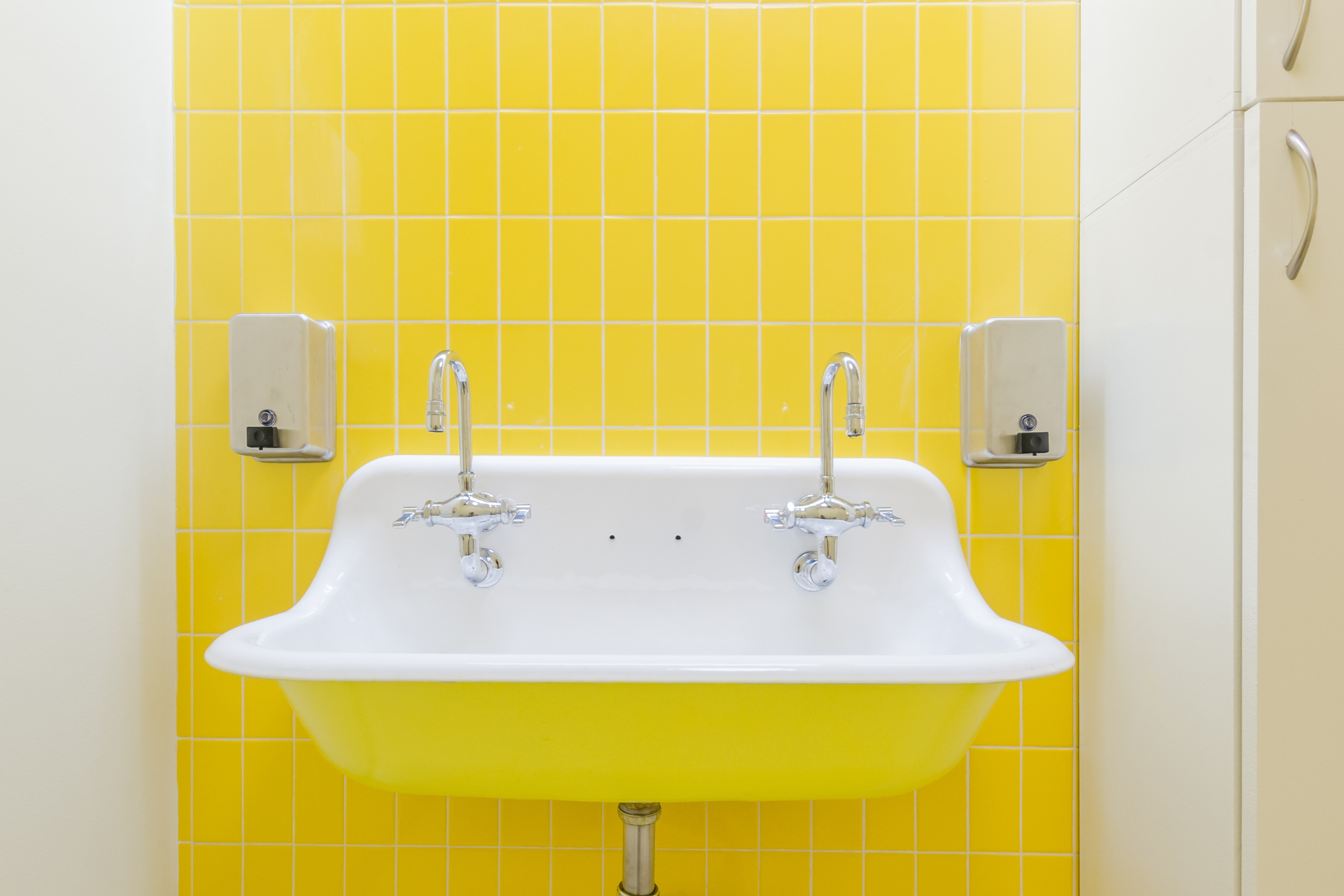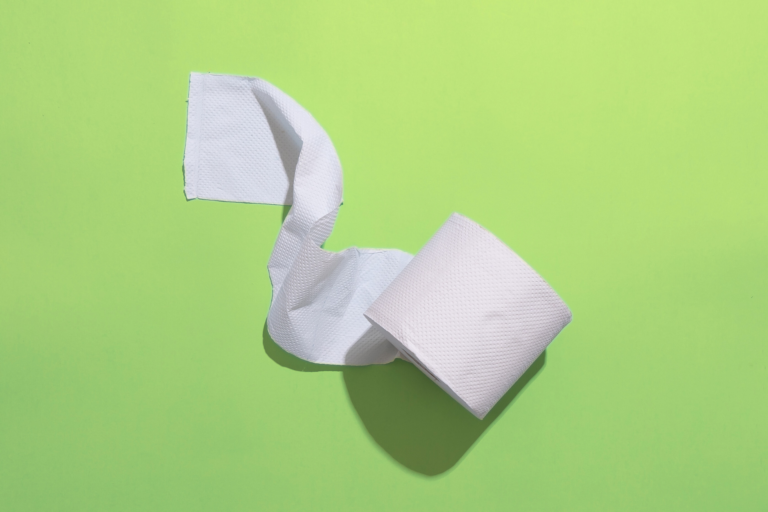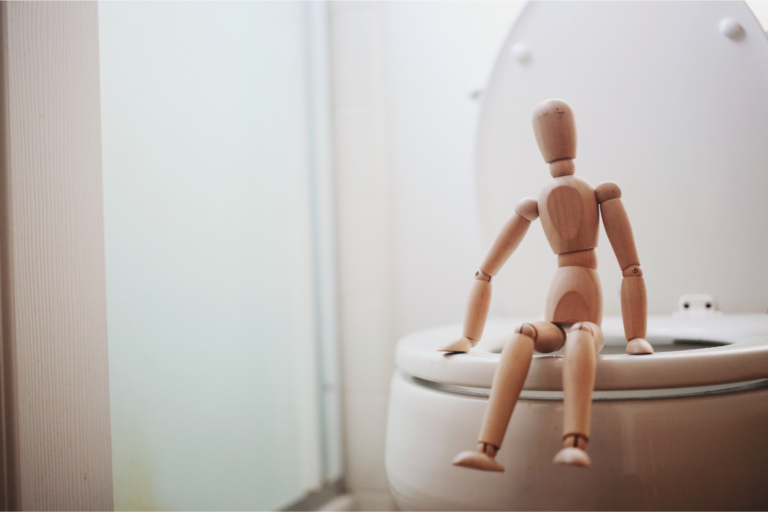Yellow Poop May Be a Sign Of Infection, Liver Disease, Or Even Stress
Key Takeaways:
Yellow or pale stools may occur due to liver, gallbladder, or pancreatic disease.
Other common causes include intestinal parasites, infections, celiac disease, and chronic stress.
Medications, dietary supplements, and changes to your diet may also cause poop to turn yellow.
1. Liver, gallbladder, or pancreatic disease
Liver, gallbladder, and pancreatic diseases may all contribute to the appearance of yellow stool. These 3 organs play crucial roles in the digestive process — specifically, how bile salts are produced and transported.
Bile, a fluid made by the liver and stored in the gallbladder, is responsible for breaking down fats. Bilirubin, a byproduct of red blood cells, along with bile, gives stool its typical brown color.
When there’s a problem with any of these organs, abnormal bile or bilirubin production, release, or function, may result, leading to yellow stool. You may also notice a burning sensation or white specks when you have yellow diarrhea.
Treatment for these conditions may include medication, lifestyle changes (such as a modified diet), or, in severe cases, surgery. Some drugs, like metformin, can actually cause bile acid malabsorption as a side effect. In these cases, you may need to talk to your doctor about adjusting existing medication dosages.
Liver problems
Liver diseases can affect bile production. If the liver isn’t functioning properly, it may not produce enough bile, causing poop to look yellow or even pale and clay-colored.
Additional symptoms of liver dysfunction may include:
- Jaundice (yellowing of the skin and whites of the eyes)
- Fatigue
- Fever
- Itching
- Confusion
These common liver disorders may cause your poop to turn yellow:
- Cirrhosis
- Fatty liver disease (alcoholic or non-alcoholic)
- Liver infections
- Tumors
- Hepatitis
- Gilbert’s syndrome (a genetic liver disorder)
How do I know if I have liver disease? Only a doctor can diagnose you with any specific liver disease, and it doesn’t always cause significant symptoms. Symptoms of liver disease that sometimes occur include jaundice, swelling in the ankles and legs, and pain and swelling in the belly.
Read Next: Black Poop in Pregnancy: Causes & When to Call Your OB/GYN
Gallbladder and bile duct disorders
The gallbladder stores bile and releases it through bile ducts during digestion. If the gallbladder or bile ducts malfunction, they may not release enough bile for proper digestion and stool coloration.
Symptoms of gallbladder issues often include pain in the upper right quadrant of the torso, which may radiate to the right shoulder and upper back.
Common causes of gallbladder dysfunction include:
- Gallstones
- Gallbladder infection
- Bile duct inflammation (cholangitis)
- Gallbladder inflammation (cholecystitis)
- Tumors, including gallbladder cancer
People with autoimmune disorders like ulcerative colitis and Crohn’s disease sometimes develop specific non-bacterial inflammatory conditions such as primary biliary cholangitis (PBC) or primary sclerosing cholangitis (PSC). PBC and PSC, like other biliary disorders, can cause yellow poops.
Pancreatic conditions
The pancreas plays a role in digestion by releasing its own enzymes. Pancreatic issues can lead to yellow or acholic (pale or clay-colored) stool, often accompanied by a foul-smelling odor or frothy appearance.
Problems with the pancreas may include:
- Cystic fibrosis (CF)
- Acute or chronic pancreatitis
- Infection
- Inflammation
- Blockage of the pancreatic ducts by stones or other objects
- Neuroendocrine tumors
- Pancreatic cancer
2. Intestinal parasites (Giardia)
Intestinal parasites like giardia can cause pale stool, as they interfere with the normal functioning of the gastrointestinal (GI) tract.
Giardia is one of the most common intestinal parasites in the United States. You often get giardiasis via contaminated water or food or direct person-to-person contact.
When you’re infected with giardia, food moves faster through the GI tract, which can cause your poop to turn yellow or even greenish in color. The quick transit time prevents the stool from developing its normal brown color, resulting in an abnormal hue.
You might notice your stool has a soft or liquid consistency due to the increased transit speed. If you’re talking to your healthcare provider, this might mean your stool is type 6 or 7 on the Bristol Stool Chart.
Symptoms of giardiasis, the infection caused by giardia:
- Abdominal cramps
- Yellow diarrhea
- Nausea
- Vomiting
Not everyone with giardiasis experiences these symptoms, and the severity of symptoms may vary from person to person.
Treatment typically involves a course of prescription medication to eliminate the parasite and alleviate symptoms.
You can help prevent the spread of giardia by practicing good hygiene. Wash your hands regularly and avoid consuming potentially contaminated food or water.
3. Diet
Diet can change poop to many colors, including yellow. Certain foods and food additives may temporarily alter the color of your stool, especially if you consume a lot of them.
Here are some common dietary factors that may result in yellow stool:
- Beta-carotene-rich foods: Eating a large amount of foods high in beta-carotene, such as carrots, sweet potatoes, and pumpkin, can cause your stool to turn yellow or orange in appearance. Their pigments don’t always digest easily, so when they pass through the gastrointestinal tract, the pigments appear yellow.
- Turmeric: A popular spice used in many dishes, turmeric contains curcumin. Curcumin can give your poop a yellow hue when consumed in significant amounts.
- Artificially colored foods: Yellow or orange-colored processed foods, snacks, and drinks containing food coloring can cause your stool to appear yellow. (This is similar to how bright green foods and a ton of green veggies can turn your stool green.)
- High-gluten diet: A diet rich in gluten products, even if you’re not allergic or intolerant to gluten, can create a more yellow tint in stool.
- Fatty or greasy meals: If your poop turns yellow specifically after consuming fatty, oily, or greasy food, there may be a problem with the bile from your liver. Bile is essential for the proper digestion of fats.
If your yellow stool is due to dietary choices, consider incorporating more fiber-rich foods like fruits, vegetables, and whole grains into your diet. Cutting back on processed and fatty foods can also help promote healthy bowel movements.
Most diet-related changes to stool color aren’t a big deal and go away shortly after you’ve digested the causative food. However, if you notice yellow or other miscolored stool that doesn’t change after several days, consult your doctor to find out if something else might be going on.
4. Celiac disease
Celiac disease is an autoimmune disorder affecting the small intestine. It causes an immune response to gluten, a protein found in wheat, barley, and rye.
When people with celiac disease consume gluten, the lining of their small intestine becomes damaged, leading to inflammation and malabsorption of nutrients. This can result in gastrointestinal symptoms, including yellow stool.
The inflammation and damage to the small intestine impair the absorption of fats, which may cause stools to appear yellow and potentially oily, greasy, or smelly. This oily poop is known as steatorrhea.
In addition to yellow stool, people with celiac disease may experience other symptoms like:
- Diarrhea
- Abdominal pain
- Bloating
- Fatigue
- Weight loss
Even if you have no obvious symptoms, if you have celiac disease, you may be at risk for long-term complications like malnutrition, osteoporosis, and infertility.
People with celiac disease must follow a strict gluten-free diet to prevent further damage to the small intestine and reduce symptoms. If a gluten-free diet doesn’t work to alleviate symptoms, talk to your doctor about whether or not you may have SIBO or lactose intolerance, too.
5. Food intolerances
Food intolerances happen when the body can’t easily break down or digest down certain foods or nutrients, leading to GI symptoms.
What’s the difference between a food allergy and a food intolerance? Food allergies trigger the immune system and may lead to swelling, hives, or difficulty breathing. Food intolerances are related to the digestive system’s inability to process substances found in food and cause symptoms more related to the digestive tract, like nausea and diarrhea.
Common food intolerances include lactose intolerance, fructose malabsorption, and sensitivity to food additives.
Food intolerances can cause food to pass through the gastrointestinal (GI) tract more quickly than usual, leaving less time for the stool to develop its normal brown color. As a result, stools may appear yellow.
Other symptoms of food intolerance may include:
- Bloating
- Gas
- Abdominal pain
- Diarrhea
- Nausea
To address yellow stool caused by food intolerances, identify the food triggers that lead to disruptions in your bowel movements. A registered dietitian or nutritionist can help you design a balanced diet that accommodates your specific food intolerances and supports better digestive health.
Consider seeking medical advice if you can’t identify what’s causing your problem or if your symptoms get worse.
6. Tumors in the gallbladder or pancreas
Tumors in the gallbladder or pancreas can also contribute to the presence of yellow stool because they can interfere with the production, storage, or release of bile.
Bile is essential for the normal digestion of fats and the breakdown of waste products in the gastrointestinal (GI) tract. When bile is not adequately released or functioning, the stool may appear yellow instead of its typical brown color.
Symptoms associated with gallbladder or pancreatic tumors vary depending on the location and size of the tumor. Some common symptoms may include:
- Abdominal pain
- Jaundice (yellowing of the skin and whites of the eyes)
- Weight loss
- Loss of appetite
- Unusual belching
- Itching
- Fatigue
- Sleep disturbances
- Heartburn
- Changes in bowel habits, such as diarrhea or constipation
- Different colors of stool, including pale stools or melena (black, tarry stool)
Treatment may include surgery, radiation therapy, chemotherapy, or targeted drug therapy. Your healthcare team will determine the most effective treatment plan based on the stage and type of the tumor.
Yellow poop alone does not definitively indicate that you have a tumor.
But if you experience persistent yellow stool with other symptoms mentioned above or have a family history of gallbladder or pancreatic diseases, consult your healthcare provider for proper evaluation and diagnosis. Early detection and appropriate treatment can improve the prognosis and management of these conditions.
7. Infections or food-borne illnesses
Infections or food-borne illnesses can result in yellow stool.
When food moves rapidly through the gastrointestinal (GI) tract due to infection or illness, it doesn’t have enough time to pick up the normal brown coloration from bile. This may cause the stool to appear yellow or even greenish.
Food-borne infections are typically caused by bacteria, viruses, or parasites (like giardia, discussed above) that contaminate food or water.
Common sources of food-borne illnesses are:
- Undercooked meats
- Raw or contaminated fruits and vegetables
- Unpasteurized dairy products
- Contaminated water sources
Symptoms of food-borne infections can vary, but they often include:
- Abdominal discomfort or cramping
- Diarrhea
- Fatigue
- Nausea
- Vomiting
In some instances, you may also notice undigested food particles or mucus in your stool.
Additionally, COVID-19 sometimes leads to yellow or greenish diarrhea.
Treatment for bacterial infections typically involves antibiotics, while viral infections often require supportive care, such as hydration and rest.
8. Medications
Certain medications can cause yellow stool as a side effect, as they may impact digestion, alter bile production, or affect the speed of food passing through the GI tract.
Here are some of the medications that may cause yellow poop:
- Antacids: Over-the-counter antacids containing aluminum hydroxide, such as Maalox or Mylanta, can cause pale or yellowish stools due to their aluminum content.
- Antibiotics: Some antibiotics, like rifampin, can alter the color of the stool. They may also cause diarrhea or disrupt the normal balance of gut bacteria, altering stool color and consistency.
- Orlistat (Xenical, Alli): This weight loss medication works by blocking fat absorption in the gut. As a result, excess fat may be excreted in the stool, causing it to appear yellow and sometimes oily.
- Laxatives: Overuse of laxatives can result in yellow stool, as they may speed up the transit of food through the GI tract. This can prevent the normal brown color from developing.
- Cholestyramine: This medication is used to lower cholesterol levels and can interfere with bile absorption, which may lead to pale or yellowish stools.
- Chemotherapy drugs: Some chemotherapy medications can affect the liver or gallbladder, potentially altering bile production and resulting in yellow stool.
Discuss any medication-related side effects with your healthcare provider, who can determine if you need to change medications or if the side effect should resolve on its own.
9. Supplements
Like medications, some dietary supplements may cause yellow stool due to their ingredients or effects on the digestive system.
Here are a few examples of supplements that may contribute to yellow stool:
- Multivitamins: Certain multivitamins, especially those containing high amounts of beta-carotene, vitamin A, or iron, may cause stool color changes. Beta-carotene and vitamin A can give stool a yellow-orange tint, while iron supplements may result in a greenish-yellow color.
- Fish oil and other omega-3 supplements: These supplements can sometimes cause loose, oily, or yellow stools, especially if you take extremely high doses. Fish oil and omega-3 fatty acids are fats. If your body doesn’t absorb or break down the fats entirely, changes in stool color and consistency can result.
- Turmeric and curcumin supplements: Turmeric and its active compound, curcumin, are known for their bright yellow color. In some cases, taking these supplements in large quantities or over an extended period may cause the stool to appear yellow due to the presence of excess pigment.
- Herbal supplements: Certain herbal supplements like senna or cascara sagrada may cause yellow stool as they have a laxative effect. These herbs can increase the speed at which food moves through the digestive tract, leading to stool that is not fully stained by bile and looks yellow.
If a specific supplement is causing yellow poop, discontinuing the supplement or adjusting the dosage may help. Always consult with your healthcare provider before making changes to your supplement regimen.
10. Stress and its effect on GI transit time
Stress can significantly impact the digestive system, including causing changes in stool color and consistency.
When your body is under stress, it releases stress hormones like cortisol and adrenaline, which can affect the GI tract’s functioning. This may result in alterations in the transit time of food through the digestive system.
Under stress, the body may speed up the movement of food through the GI tract, resulting in a shortened transit time. When this occurs, the stool may not have enough time to fully mix with bile, which is responsible for giving stool its typical brown color. As a consequence, the stool may appear yellow, greenish, or even lighter in color.
Chronic stress can cause significant digestive symptoms like abdominal pain, bloating, cramping, and diarrhea, especially in patients with irritable bowel syndrome. The faster transit time, combined with these symptoms, may lead to softer or even liquid stool, which may also appear yellow.
Occasional yellow stool due to stress is typically not a cause for concern, but you should talk to your doctor if persistent stress causes ongoing poop problems.
Managing stress through relaxation techniques, exercise, or counseling can help alleviate stress-related tummy symptoms. Implementing a high-fiber diet and staying well-hydrated can also promote regular bowel movements.
Yellow stool in newborns and babies
Yellow stool is typically normal in newborns and babies, particularly if they are breastfed.
In the first few days after birth, a baby’s stool is typically a dark green or black color, known as meconium. After that, the stool color will transition to a mustard-yellow shade, which is normal for breastfed babies.
This yellow hue is due to the presence of healthy gut bacteria that help break down breast milk. The stool may also have a seedy or pasty texture, which is entirely normal.
For formula-fed babies, poop will usually turn to a tan or light brown color within a few days. However, if the stool remains yellow, it’s still generally not a cause for concern. Each baby’s digestive system is unique, and the stool color can vary depending on the formula your little one eats.
In rare cases, the appearance of pale stool (which may also be called “yellow”) in newborns may signify a rare condition known as extrahepatic biliary atresia. This serious disease requires immediate medical attention and potentially surgical treatment.
It’s important to remember that occasional variations in stool color are expected, and a single instance of yellow stool shouldn’t be alarming.
But if you notice ongoing changes in your baby’s stool color or consistency, along with other symptoms such as vomiting, fever, irritability, or poor weight gain, consult your pediatrician for further evaluation and guidance.
Yellow stool in older adults
Yellow stool is not exclusive to older adults, but it’s more common the older you get due to multiple age-related factors. Older people may experience yellow poop due to:
- Medications: Medications may cause changes in stool color, particularly when combined with other drugs. For instance, certain antacids, antibiotics, or medications for blood pressure can lead to yellow stool.
- Slower digestion: With age, the digestive process may slow down, leading to changes in stool color and consistency. Yellow stool in older adults could be a result of slower digestion, leading to incomplete breakdown and absorption of nutrients.
- Age-related diseases: Certain diseases and conditions that become more common as we age, such as gallbladder issues or liver problems, can cause yellow stool.
- Dietary changes: Older adults may experience changes in appetite, leading to alterations in their diet. Consuming different foods or a diet lacking in fiber can result in yellow stool. Ensuring a balanced diet, rich in fruits, vegetables, and whole grains, can promote healthy bowel movements.
Treatments for yellow stool
The appropriate treatment for yellow stool depends on the underlying cause. That’s why we list each treatment above with its root cause.
Remember, it’s essential to consult with your healthcare provider to determine the underlying cause of your yellow stool and receive personalized treatment recommendations.
When to talk to your doctor
While occasional yellow stool may not be a cause for concern, it’s essential to monitor any changes in bowel habits and seek medical advice when necessary.
Here are some situations when you should consult your healthcare provider:
- Persistent yellow stool
- Yellow stool accompanied by other different colors, such as tarry, black poop, or red stools (these can be caused by simple factors, like Pepto-Bismol or beets, but can be a sign of a much more serious issue)
- Significant or continuing abdominal pain
- Blood in stool (this may indicate a medical emergency; do not wait to seek help)
- Severe or worsening symptoms, particularly if they worsen over time or interfere with your daily life
- Change in bowel habits, like diarrhea or constipation that lasts more than a week
- Unexplained weight loss
- Dehydration
Err on the side of caution when it comes to your health. If you’re unsure whether your symptoms warrant a visit to your healthcare provider, give your doctor a call to find out if they recommend scheduling an appointment. They may suggest seeing your primary care physician or potentially refer you to a gastroenterologist.
If you are dealing with a serious condition, early intervention can make a huge difference.






![Why Does My Poop Smell Sweet? [Infants & Adults]](https://poopquestions.com/wp-content/uploads/Sweet-Smelling-Poop-Header-768x513.png)
